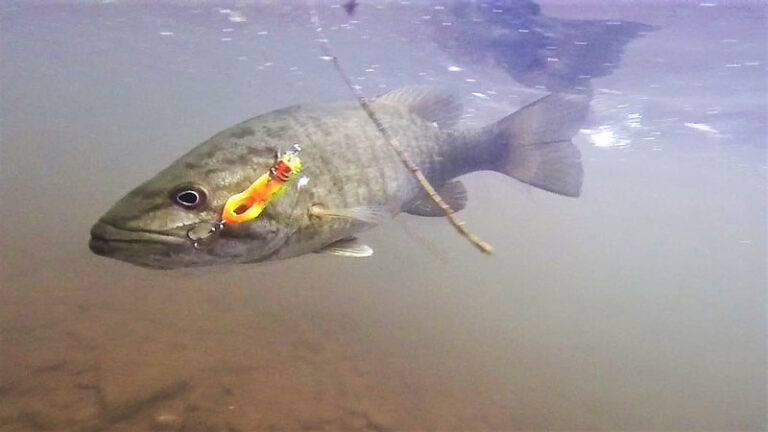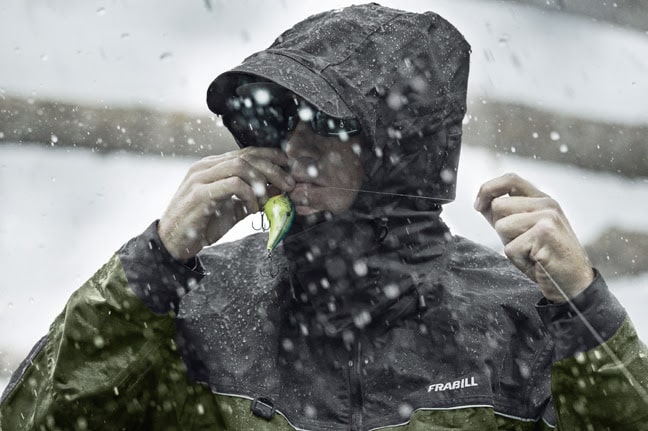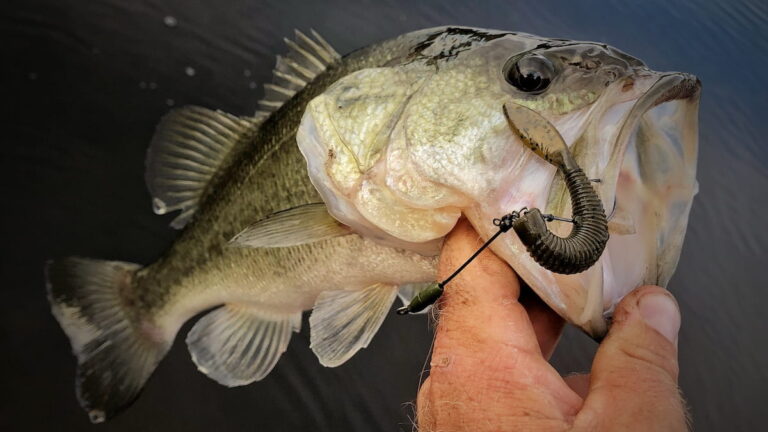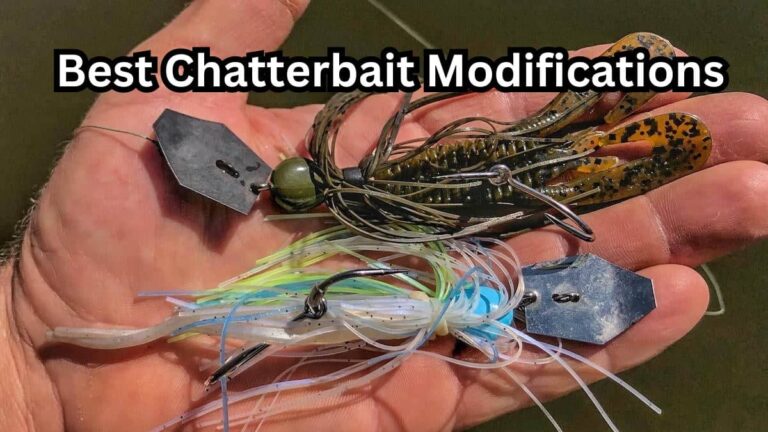How to Fish with Rubber Worms for Bass
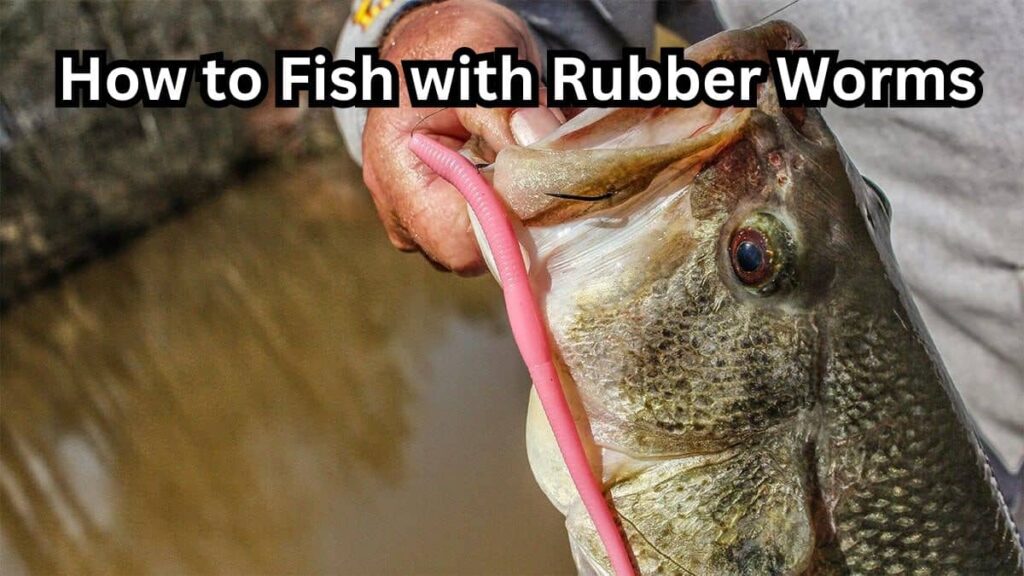
The modern world of fishing can get very confusing and overwhelming.
But one bait that you can always rely on is the simple rubber worm.
No matter the conditions or time of year, you can always catch some bass on these soft plastic baits.
So let’s break down how to fish with rubber worms.
Are Rubber Worms Good for Fishing?
Yes, rubber worms are fantastic soft plastic baits for bass fishing. For decades, both pro and weekend anglers have been catching boat loads of bass on rubber worms.
These baits are incredibly versatile and are able to persuade bass to bite in almost all fishing conditions or scenarios.
Types of Rubber Worms
1. Stick Bait or Senko Style Worms
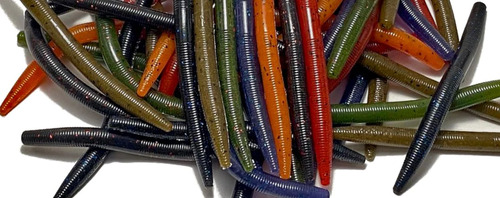
Over the past 5-10 years, the stick bait style of plastic worm has become the most popular.
The simplicity of the stick bait is what makes it so effective. It doesn’t have much action, but that means that it is super subtle and nonthreatening to the bass.
The wacky rig and the weightless Texas rig are the two primary ways to the Senko style rubber worm.
2. Finesse Worm
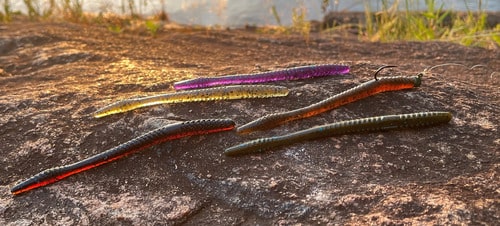
The long, thin design of a finesse worm allows it to sway, swing, swim, and flow through the water.
This action is very natural and enticing while still giving a finesse presentation to the bass.
Most often used on a shaky head or drop shot rig, finesse worms are perfect for catching bass when the bite gets tuff.
3. Curl Tail Worms
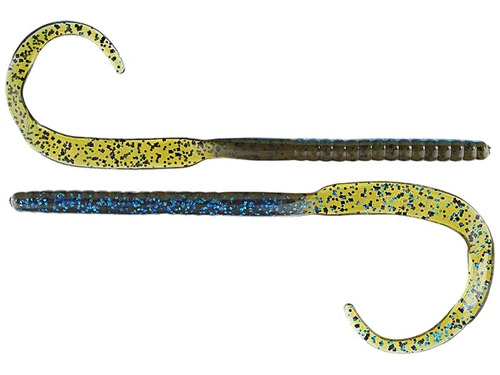
Curl tail worms are probably the most classic and iconic rubber worms out there.
Anglers have been catching bass on these since before any of us reading this were even born.
The curly, J shaped tail of this rubber worm swims and spirals through the water. This action looks amazing and generates lots of bites.
How to Rig Plastic Worms
In order to fish a rubber worm, you need to be able to rig it up effectively.
Although there are limitless rigging techniques, the following rigging methods are all you need to maximize your rubber worm fishing success.
Wacky Rig

- Use rig with a stick bait style worm
- Use weightless hook in shallow water and a weighted hook in deep water
- Spinning rod and reel setup is ideal
The wacky rig is probably my favorite rig for worm fishing. You fish a wacky rig by slowly twitching in the bait every 1-2 seconds.
Since the rubber worm is hooked through the middle, each twitch causes the worm to dart forward with an inchworm motion.
Weightless Texas Rig

- Use with a Stick Bait or Finesse Worm
- Fish this rig in Shallow Water
- Spinning rod and reel setup is ideal
During the summer, when ponds and lakes get filled up with weeds, this rig is terrific.
The Texas style of hooking the worm makes it weedless so that your hook will not get snagged or caught up in grass, lily pads, or brush.
Again, you are going to be slowly twitching the bait in. But with this rig, the worm will dart side to side with each jerk of the rod tip.
Shaky Head Rig
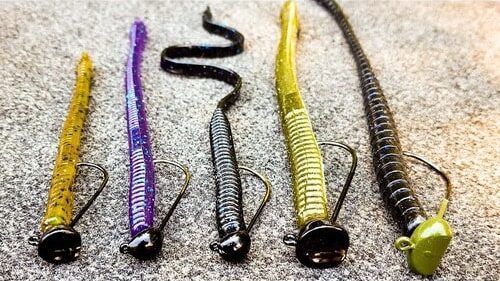
- Use with Finesse or Curl Tail Worm
- Best to be fished very slowly, when the bite gets tuff
- Spinning rod and reel setup is ideal
The shaky head is one of my favorite ways to catch lockjaw bass. Just let the worm sink to the bottom and slowly drag it back in.
The occasional hop or shake of the rod tip can add some extra action and get bass to bite.
Texas Rig

- Use with Curl Tail Worm
- Best for fishing brush, docks, or grass
- Baitcaster rod and reel setup is ideal
The Texas rig is amazing for target bass that are positioned in or around cover.
You need a weedless bait that can glide right through the grass, brush, or other structure.
The bullet weight and slender profile of the worm allow the bait to be pulled right through cover without getting stuck or snagged.
Best Color Plastic Worms for Bass Fishing
When it comes to choosing your soft plastic worm color, it can be overwhelming. There are quite literally hundreds of different options out there.
But I have found that it is best to just keep it simple, and stick to these:
Black
Black worms are best for fishing muddy water. The dark color creates a clear silhouette that bass can see even in very muddy water.
Green Pumpkin
Green pumpkin is a great choice any time you are fishing in clear water. It is considered a very natural color that mimics tons of different things that bass eat.
Dark Red
Dark red outperforms all other worm colors in cold water. Red is a great color for the winter and early spring months, because bass really hone in on the color red when the water is cold.
White
No matter what bait or lure you are using, white is pretty much always a great color choice.
White will work no matter the water clarity, temperature, or time of year. You really can’t go wrong with a white rubber worm.
How to Retrieve a Rubber Worm
Your retrieval will depend on how you are rigging the worm. I explained how to fish each rigging method above, so you can just follow those.
But here are a couple things to keep in mind:
- Slow Retrieval: The beauty of rubber worms is their simplicity and subtlety. You can’t really fish them too slow, but you can very easily fish them too fast.
- Keep the Worm Low in the Water: Bass that are high in the water column are primarily feeding faster moving prey such as shad, bluegill, or frogs. Worms really shine when being fished towards the bottom.
Bass Fishing with Plastic Worms In Ponds
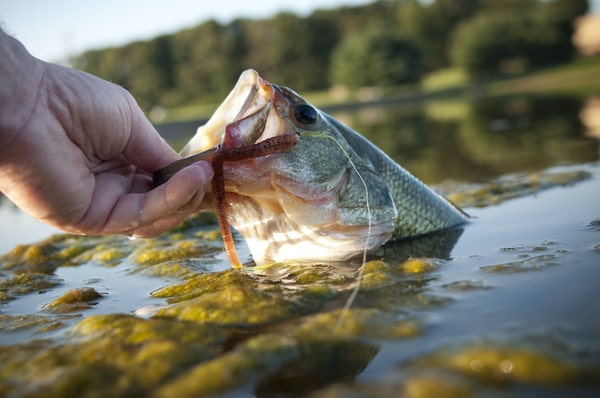
Plastic worms are one of the best baits or lures for fishing in ponds.
Ponds are typically very shallow, and worms work best in shallow water.
You will also have to fish from the bank in ponds, and the slow retrieval speed of rubber worms allows you to make the most of the bank and not miss any bass.
And also, most ponds are highly pressured. Subtle, enticing presentations such as a plastic worm is a fantastic way to catch pressured bass.
FAQ
What are Rubber Worms, and Why are they So Popular?
Rubber worms are soft plastic baits designed to mimic the appearance and movement of real worms.
They are popular among anglers for several reasons, including their versatility, durability, and ability to attract a wide range of fish species.
What Species of Fish Can You Catch on Rubber Worms?
Rubber worms are versatile baits that can attract a variety of freshwater fish species, including bass, trout, walleye, pike, and panfish.
Their lifelike appearance and realistic action make them effective for enticing fish in various environments and conditions.
Reeling this In
In the world of fishing, rubber worms stand as timeless icons of effectiveness.
Whether you’re casting in the serene quiet of a pond or battling the currents of a river, these soft plastic baits consistently deliver results.
With their varied styles, rigging options, and subtle yet irresistible movements, rubber worms continue to reign supreme as a go-to choice for anglers seeking success on the water.
So, next time you’re out fishing, don’t overlook the simplicity and power of the rubber worm—it might just be the key to unlocking your next trophy catch.

